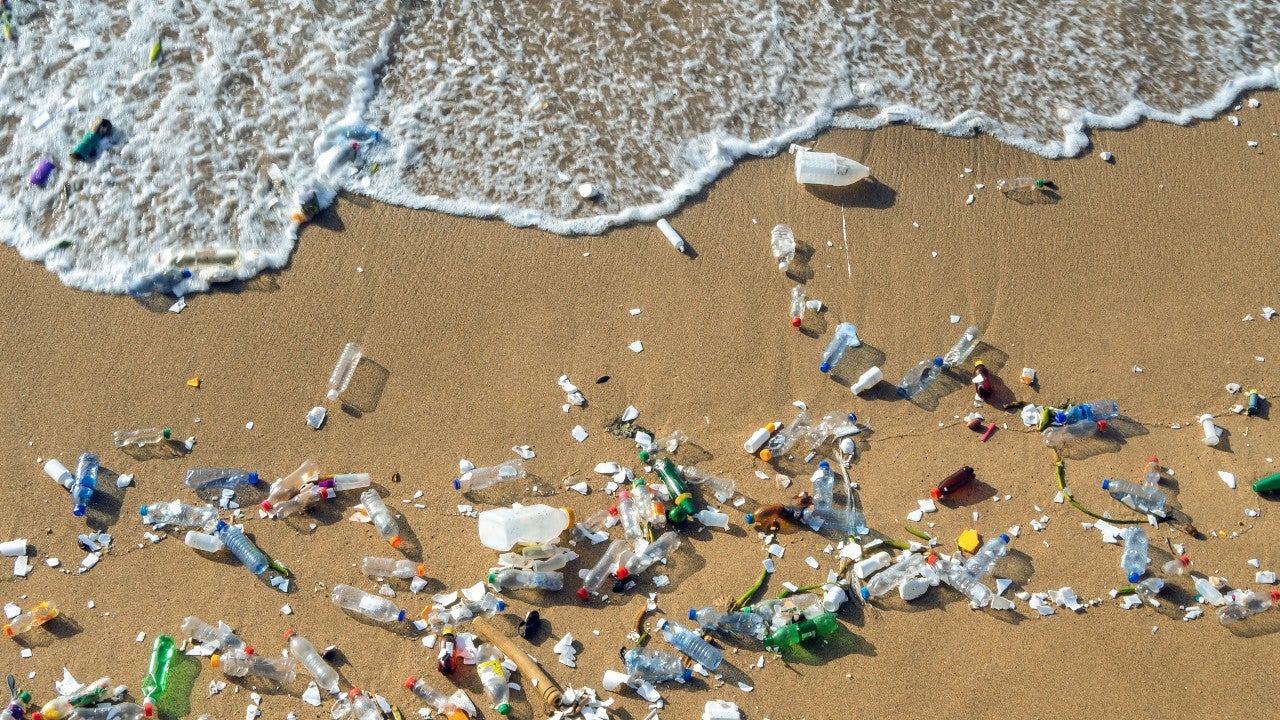 Plastic littered on the beach
Plastic littered on the beach
Imagine standing on a beautiful island beach - soft sand, blue water, palm trees swaying in the breeze – gentle waves from the sea are lapping at your feet... but with each wave comes plastic bags, bottles and wrappers. The beach is covered in plastic.
This is the situation facing islands and archipelagic countries across the world, from the Caribbean to the Pacific Islands and islands off the coasts of Africa. But nowhere is it more noticeable than in Southeast Asia. The region is a hotspot for plastic pollution, making up half of the top 10 contributors to plastic waste washed into the ocean. With nearly 10,000 inhabited islands, there are thousands of diverse island communities across Southeast Asia facing the challenge of beaches covered in plastic.
Managing plastic waste on small and remote islands can be particularly challenging. There are often limited waste collection and treatment options on the islands, resulting in much plastic waste dumped or burned in the open, with serious risks to community health and the environment. The lack of easy transport connections to other islands and the mainland mean that it is expensive to treat the waste elsewhere, where there may be larger populations and better treatment options available.
So how can plastic waste management on small and remote islands be improved? We need to consider opportunities for plastic recycling and innovative technological solutions that can help. But technology will not provide an easy fix, it is also essential to reduce the amount of plastic waste produced in the first place.
Having access to markets for recycled plastic is a key factor in determining opportunities for plastic recycling. If the recyclable plastics can be transported along with other valuable recyclables to the mainland or a nearby island recycling hub at a reasonable cost, then these should be fed into existing recycling infrastructure to be effectively and responsibly processed. Small-scale artisanal recycling to produce souvenirs may be able to be implemented on islands where there is a tourist market.
Unfortunately, there is no single ‘silver bullet’ technological solution to the problem of plastic waste on islands. All recycling technologies require specific types and quality of plastic waste. These technologies must therefore be integrated into a broader waste management system with incentives for separation and pre-treatment of plastic waste. This is a challenge in small and remote island contexts. And even then, recycling technologies cannot be used to treat all plastic waste – a combination of technologies and other solutions is required. This could include disposing of plastic waste in a controlled manner, such as into a sanitary landfill on the mainland or a small, controlled landfill on the island.
The World Bank, in cooperation with the Ministry of Environment and Water, Malaysia, has produced the Technology Options for Plastic waste in Island Contexts (TOPIC) Toolbox. The TOPIC Toolbox was developed by a team from cyclos and Lasaju. Funding was provided by PROBLUE, an umbrella multi-donor trust fund, administered by the World Bank, that supports the sustainable and integrated development of marine and coastal resources in healthy oceans. The TOPIC Toolbox helps island decision makers identify potentially viable technologies and other solutions for treating plastic waste on their islands, empowering them to make effective investment and policy decisions on treatment options.
Using tools such as the TOPIC Toolbox to understand viable treatment options is necessary to manage the plastic waste that will inevitably be produced. But for beaches in Southeast Asia to be free of plastic, upstream solutions are essential to reduce the amount of plastic waste produced in the first place. Upstream solutions can include policies to reduce the import and use of specific problematic plastic items on islands and encourage the use of alternatives, such as the plastic bag and straw ban introduced in Samoa in 2019. Key island sectors, such as tourism, play an important role in implementing these upstream solutions.
The World Bank is working with countries across Southeast Asia on marine plastics, including on strengthening countries’ upstream plastics policies. The new Southeast Asia Regional Program on Combating Marine Plastics (SEA-MaP) Regional Project with the Association of Southeast Asian Nations (ASEAN) will implement many actions in the ASEAN Regional Action Plan for Combating Marine Debris in the ASEAN Member States. This will support innovative solutions and plastics policy harmonization across the region, including upstream solutions to reduce the amount of plastic waste produced.
By working together at the regional, national and island level to reduce plastic waste, we can imagine a day when it will be possible to stand on an island beach anywhere in Southeast Asia and enjoy the sand and the sea without waves filled with plastic bags, bottles and wrappers.




Join the Conversation